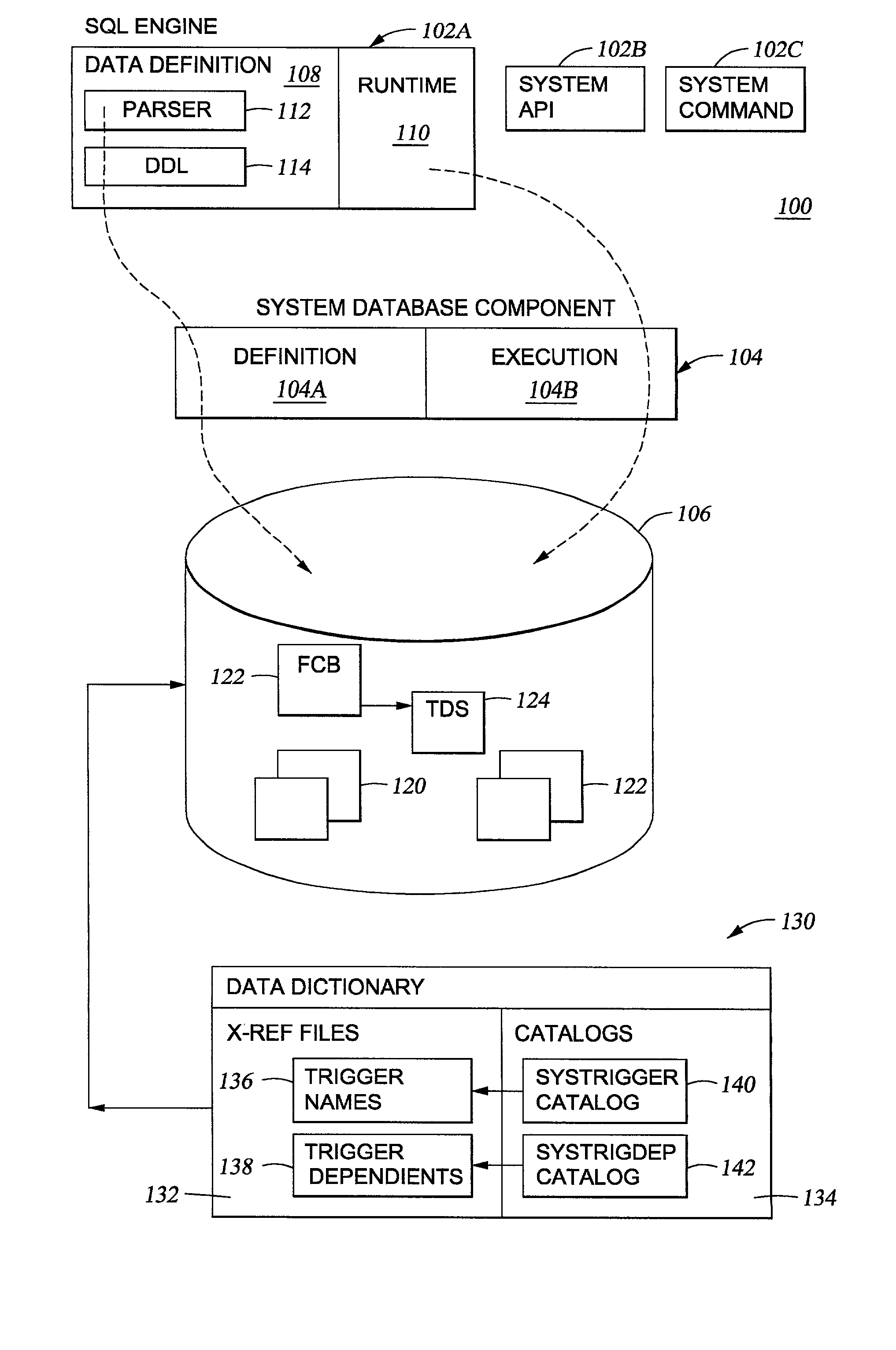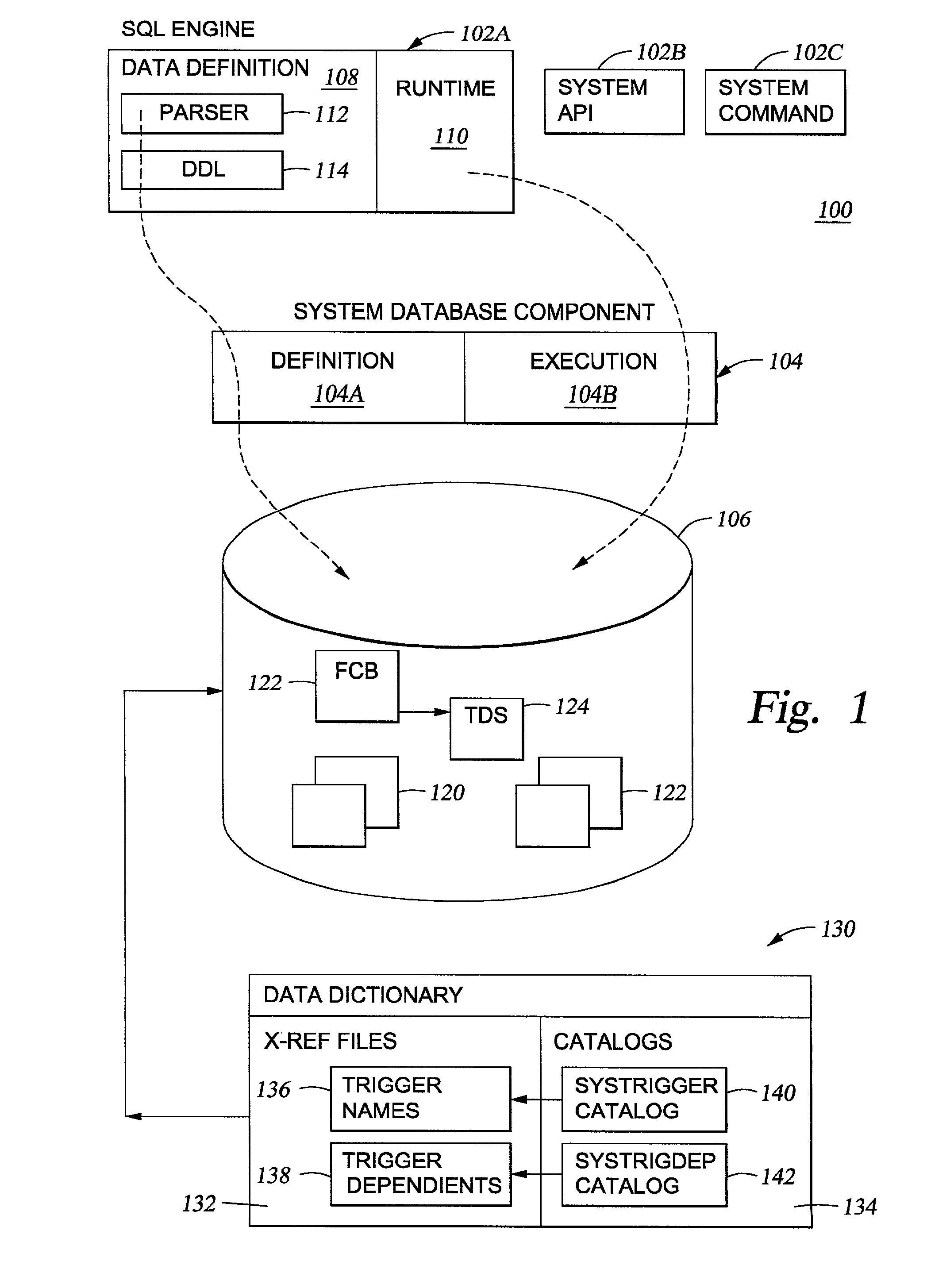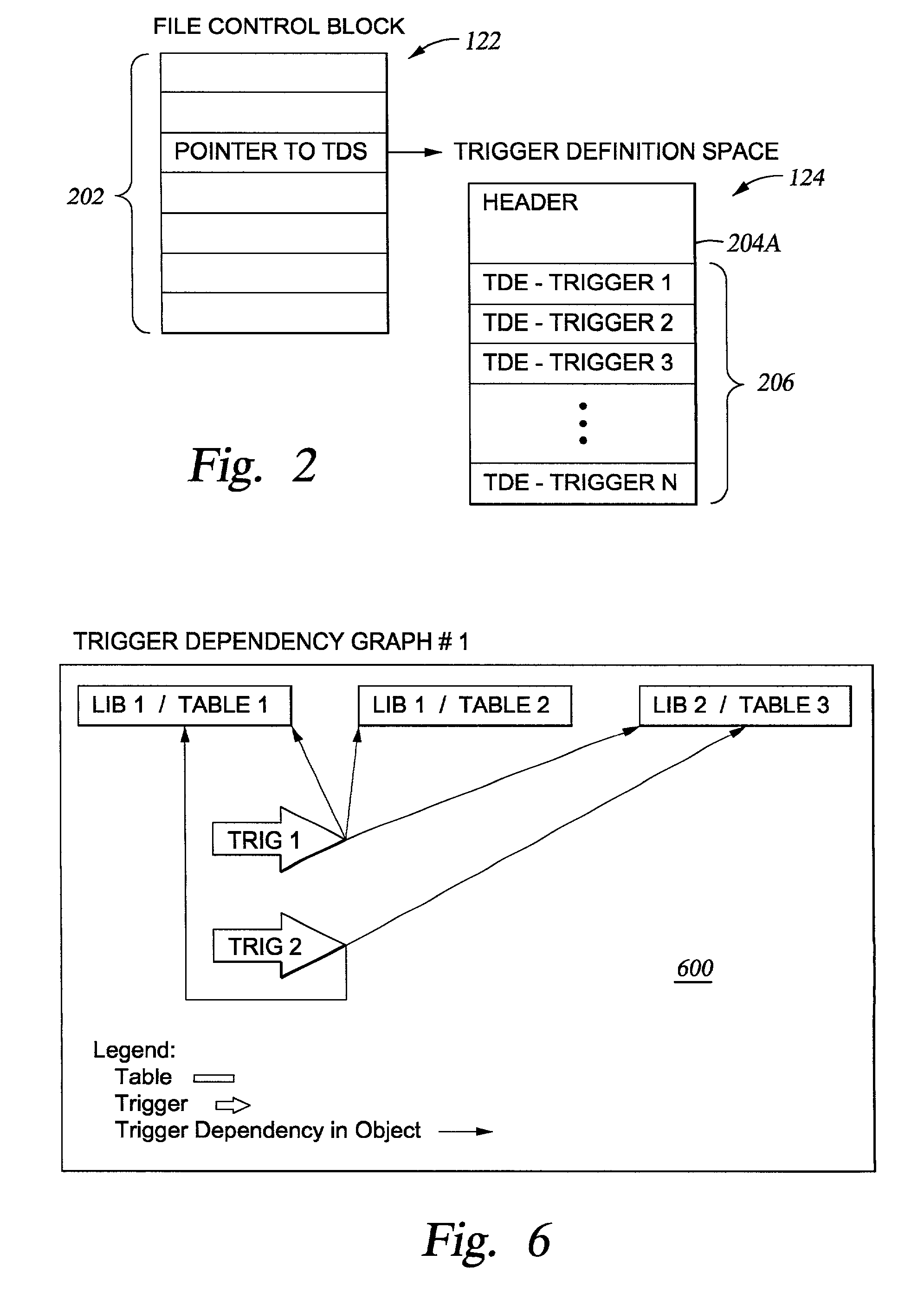Dependent object processing for triggers
a technology of object processing and triggers, applied in the field of information processing, can solve problems such as further complicated situation, user may make changes to tables, and objects may be missing or differen
- Summary
- Abstract
- Description
- Claims
- Application Information
AI Technical Summary
Problems solved by technology
Method used
Image
Examples
Embodiment Construction
001 CREATE TRIGGER LIB1.TRIG 2 002 AFTER UPDATE OF COL1, COL2, COL3 on LIB1.TABLE1 003 REFRENCING OLD AS X1 NEW AS X2 004 FOR EACH ROW MODE DB2SQL 005 WHEN (X1.COL1 = 1) 006 BEGIN ATOMIC 007 INSERT INTO TABLE1 (COL1, COL2, COL3) VALUES(1,2,3); 008 INSERT INTO TABLE3 (COL1, COL2, COL3,) VALUES(7,8,9); 009 END
[0065] However, in this case the CREATE TRIGGER Statement III does not include the syntax INSERT INTO TABLE2. The object dependency for each trigger is illustrated by the relationship chart 600 shown in FIG. 6.
[0066] In some embodiments, methods are provided that allow a user to identify potential problems using objects that had been modified in some way by certain operations. Illustrative modifying operations include the SQL RENAME statement and the system functions to rename a file, renaming library, move a file and restore to a different library.
[0067] In one embodiment, if a table is renamed and the table has self referencing triggers defined on it, then the trigger will be s...
PUM
 Login to View More
Login to View More Abstract
Description
Claims
Application Information
 Login to View More
Login to View More - R&D
- Intellectual Property
- Life Sciences
- Materials
- Tech Scout
- Unparalleled Data Quality
- Higher Quality Content
- 60% Fewer Hallucinations
Browse by: Latest US Patents, China's latest patents, Technical Efficacy Thesaurus, Application Domain, Technology Topic, Popular Technical Reports.
© 2025 PatSnap. All rights reserved.Legal|Privacy policy|Modern Slavery Act Transparency Statement|Sitemap|About US| Contact US: help@patsnap.com



